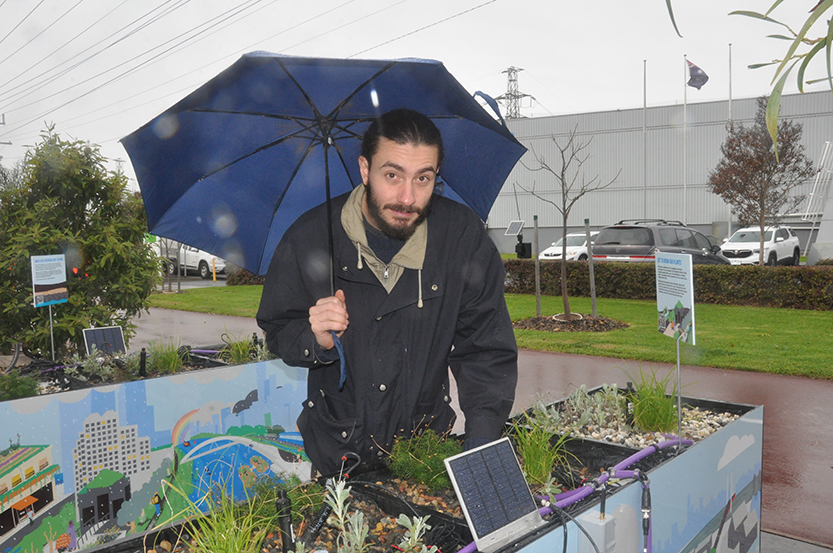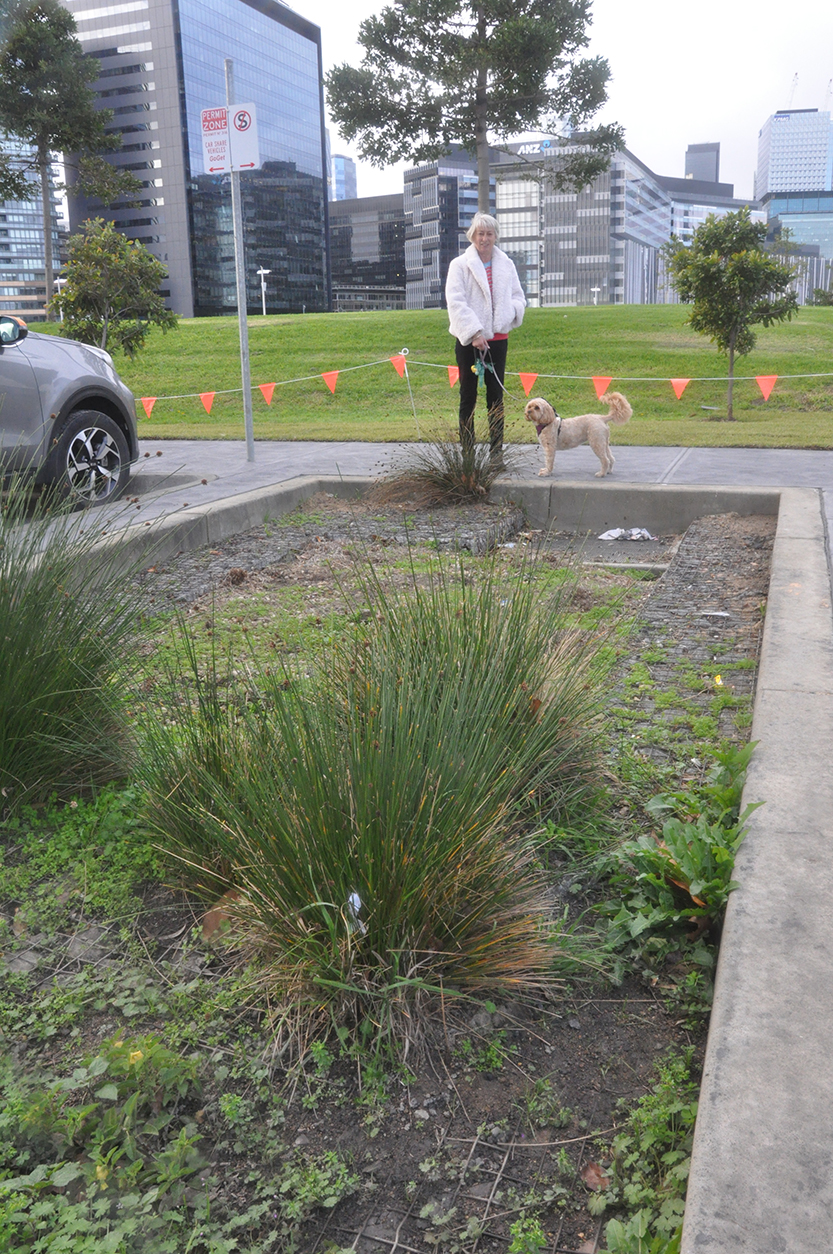A big tick for water gardens
Rain! Rain! Rain! There’s a lot of it that falls on the floodplains of Fishermans Bend and the nearby residential areas of Yarra’s Edge.
Last month the City of Melbourne held a meeting with residents to talk about the role of water gardens.
This month masters degree student Andreas Baruhas is clearing up a few misconceptions.
Residents were surprised to discover that at least a dozen water gardens already exist alongside the Yarra’s Edge developments.
Water gardens are sunken gardens that deal with run-off from hard surfaces and support plants such as reeds, but they have a much larger purpose in the control of floods.
After the meeting, residents told Docklands News that the gardens were more likely to foster weeds and “almost invite rubbish”.
“No-one knows about them,” one resident said. “Some are totally empty.”
An experiment in the industrial precinct of Turner St next to the new bicycle path is trying to solve those problems and change community perspectives.
The City of Melbourne is funding a remix garden project by University of Melbourne students to improve the sustainability, maintenance, and appearance of water gardens.
"Rain gardens are seen around Docklands as sunken gardens,” Andreas told Docklands News. “People don’t know about their purpose."
At the macro level, water gardens can be scaled up to compensate for the huge increase in impervious surfaces on the Yarra River floodplains.
“Soil particles can fill with water,” Andreas said. “It makes a difference and reduces the amount of a flood. Water also evaporates from plants. A lot of little things help. They can help mitigate flooding.”
At the micro level, experiments are being conducted to find the best plants, the most sustainable substrate, and a way of using soil moisture sensors.
“From a maintenance perspective it’s time consuming to go around [to sites]. How can we use data?”
“There’s a good message about the survival of plants. Carex is the hero of the story. It has an expansive root system that does a good job of filtering nitrogen.”
Other plants are being tested as companions in terms of their tolerance to inundation. “It’s hard to get it right,” he admitted.
Contaminated water has been carted in to simulate the conditions of run-off and the removal of nitrogen can be measured. Different sorts of gravels from construction sites and repurposed sands are also being tested.
He said that the use of data and signage can help gain community acceptance. “If you get buy-in from the community you can get them to do some of the maintenance.”
With the development planned for Fishermans Bend and the huge increase in impervious systems, water gardens are one of the tools that can be installed at the outset. The project will also test the ability to scale up.
For those critical of the maintenance of the gardens installed beside Point Park, basically the gardens are doing their job and draining away water in flood-prone areas. •

Meet Lucas Guilbert







 Download the Latest Edition
Download the Latest Edition
